Riding the Tide, Mission Accomplished, and Moving On
Riding the Tide
Overview
This stage entails a return to stability and consistency after obtaining a promotion or opportunity and making a decision to stay in the chosen field for a long time. The employee who reaches this stage has amassed a wealth of experience that allows him to considerably reduce the learning curve in any new project or assignment. Thus, he quickly gains and projects confidence in any new role. At this stage, the employee will again focus on getting and maintaining a reputation in the company as well as outside of it. Even though he seeks stability and consistency in the new role, the employee who reaches this stage will challenge himself to stay up to date in the field as a mechanism to ward off obsolescence.
As a manager, you face the challenge of maintaining this employee’s engagement with you and the company as you support him in defining any new roles and in obtaining stability and consistency again. Before we continue our discussion of the Riding the Tide stage, we would like you to identify in which stage of their careers your employees are.
Now it’s your turn.
Who is in the Riding the Tide stage? List the names of those employees who are in this stage in Worksheet 8.1.
Worksheet 8.1 Employees in Riding the Tide Stage
|
RIDING THE TIDE |
EMPLOYEE NAMES |
|
|
|
|
|
|
|
|
Drivers
An employee who reaches this stage has already accepted reality. Unless an unforeseen event takes place in this stage that transforms this point of view, the lens shall remain the same. We encourage you to remain vigilant for any potential signs of changes in this lens because they may lead to a dramatic shift in employee engagement at this stage. For instance, an employee who suddenly decides he views his current role as a job instead of a career will very likely become less engaged than one who suddenly decides the opposite. Consequently, you will need to adjust how you work with those employees to foster their engagement.
Total rewards will continue to be a driver of engagement at this stage because the employee will focus once more on what is available for her and perhaps even more so, because she craves stability and consistency for the rest of her career, which could be the rest of her tenure in the company. Therefore, any negative deviations between what was offered and what is actually delivered may lead to highly emotional reactions and disagreements that eventually may lead to lower levels of engagement. Conversely, any positive deviations may eventually lead to higher levels of engagement.
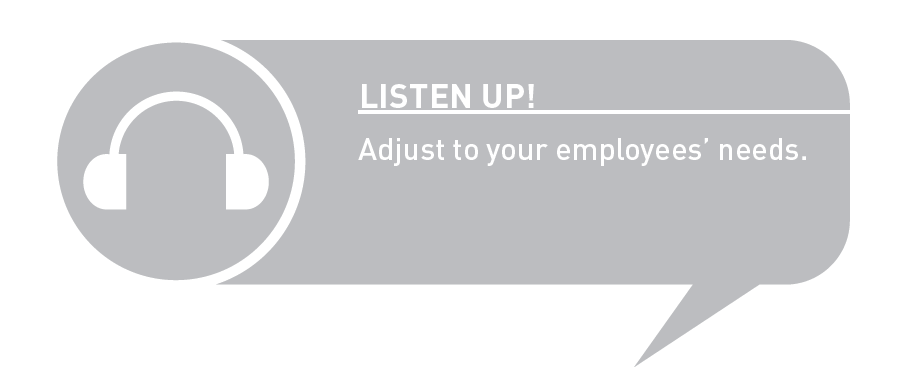
Performance management is very important as a driver of employee engagement at this stage. However, because of this stage’s focus on stability, as a manager, you need to become even more acutely aware of how your employee may perceive the different aspects of this driver that we have discussed so far. We suggest that you pay particular attention to how you allocate recognition since this is a particularly sensitive issue for employees who have advanced this far in their careers. We also emphasize the importance of those seemingly small gestures, such as flexibility and recognition, as well as a simple “thank you,” which may become more salient at a stage where the employee may believe that he has earned certain rights. Once more, the source, nature, and frequency of communication may guide an employee toward lower or higher levels of engagement, particularly for an employee who is at a stage where workplace fluctuations are less welcome than perhaps in previous stages.

Employee Behaviors
These are some behaviors that you may observe when an employee is in the Riding the Tide stage.
- Shows signs of being engaged with the organization even though the level of engagement may vary.
- Demonstrates or verbalizes that he sees the manager as someone who will eventually move on because he perceives managers as having more mobility tied to opportunities than employees in the company.
- Complies with requests and may seem to enjoy work.
- Stays active in different networks as a means to obtain and share information as well as maintain his reputation.
- Maintains steady, perhaps optimal, level of performance without any major variations.
- Embraces high standards.
- Analyzes the value of additional challenges or assignments that would entail additional expenditures of energy.
- Periodically analyzes the costs and benefits of making additional moves, typically deciding to stay in the current state.
- Expresses higher expectations.
Now it’s your turn.
Select which behaviors from this list you have observed among the employees who are in the Riding the Tide stage in Worksheet 8.2.
Worksheet 8.2 Behaviors Observed From Employees in Riding the Tide Stage
|
BEHAVIORS |
EMPLOYEE NAMES |
|
Shows signs of being engaged with the organization even though the level of engagement may vary. |
|
|
Demonstrates or verbalizes that he sees the manager as someone who will eventually move on because he perceives managers as having more mobility tied to opportunities than employees in the company. |
|
|
Complies with requests and may seem to enjoy work. |
|
|
Stays active in different networks as a means to obtain and share information as well as maintain his reputation. |
|
|
Maintains steady, perhaps optimal, level of performance without any major variations. |
|
|
Embraces high standards. |
|
|
Analyzes the value of additional challenges or assignments that would entail additional expenditures of energy. |
|
|
Periodically analyzes the costs and benefits of making additional moves, typically deciding to stay in the current state. |
|
|
Expresses higher expectations. |
Manager Dos and Don’ts
Here are some examples of what you should and should not do when an employee is in the Riding the Tide stage.
Dos
- Be clear about goals and expectations.
- Continue to find opportunities and projects for development.
- Communicate information about the future as pertinent to maintain hope and focus on what is next.
- Assume that total rewards were delivered as offered.
- Listen to “the words behind the words.”
- Communicate, communicate, and communicate about the present and future.
- Maintain a balanced relationship with the employee and continue to seek information about what she needs.
- Allow the employee to go beyond the job’s requirements.
- Meet often with the employee.
- Maintain the focus.
- Reward and reinforce as appropriate.
- Be respectful of the employee.
Don’ts
- Withhold total rewards “because she will be here forever.”
- Limit flexibility in work arrangements and other aspects of performance management because those resources should be spent on employees who are joining the organization and can contribute more.
- Withhold information from the employee.
- Become detached from the employee and rely only on electronic means to communicate because “she knows the rules.”
- Postpone decisions or opportunities to reward and recognize the employee.
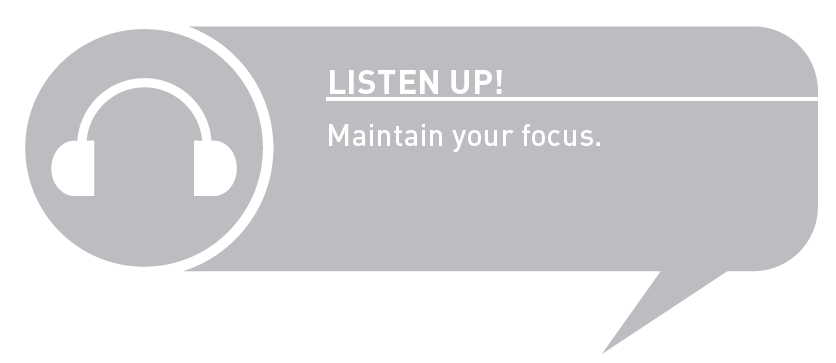
Now it’s your turn.
Worksheet 8.3 presents a behavior self-assessment for you to identify those behaviors that you have displayed or that you display typically. Place a check mark on the right column to indicate if you display those behaviors, you do not display them, or you display them sometimes.
Worksheet 8.3 Manager Behavior Self-Assessment: Riding the Tide Stage
|
BEHAVIOR |
YES |
NO |
SOMETIMES |
|
DOS: |
|||
|
Be clear about goals and expectations. |
|||
|
Continue to find opportunities and projects for development. |
|||
|
Communicate information about the future as pertinent to maintain hope and focus on what is next. |
|||
|
Assume that total rewards were delivered as offered. |
|||
|
Listen to “the words behind the words.” |
|||
|
Communicate, communicate, and communicate about the present and future. |
|||
|
Maintain a balanced relationship with the employee and continue to seek information about what she needs. |
|||
|
Allow the employee to go beyond the job’s requirements. |
|||
|
Meet often with the employee. |
|||
|
Maintain the focus. |
|||
|
Reward and reinforce as appropriate. |
|||
|
Be respectful of the employee. |
|||
|
DON’TS: |
|||
|
Withhold total rewards “because she will be here forever.” |
|||
|
Limit flexibility in work arrangements and other aspects of performance management because those resources should be spent on employees who are joining the organization and can contribute more. |
|||
|
Withhold information from the employee. |
|||
|
Become detached from the employee and rely only on electronic means to communicate because “she knows the rules.” |
|||
|
Postpone decisions or opportunities to reward and recognize the employee. |
-
How many are dos and how many are don’ts?
-
Identify the three don’ts that you would like to turn into dos.
-
Identify the behaviors that you do sometimes and explain why you do so.
Mission Accomplished
Overview
An employee who reaches this stage is already established in the field. At this point, she has realized that she has already obtained maximum benefit and growth from the particular workplace or from the chosen career. Typically, an employee who reaches this stage is either extremely satisfied or extremely unsatisfied with her progress to date. Therefore, she faces three choices for her future: to go to another workplace, to start a new career, or to leave the workforce altogether.
This employee may still feel some emotional connection to the workplace or, in rare instances, with the manager. However, she has already started the process to emotionally detach from the company in an effort to diminish the emotional impact of the upcoming separation.
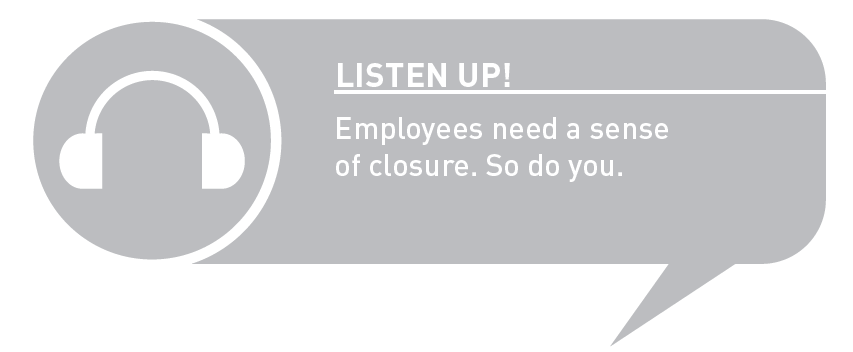
Before we proceed to our discussion of the drivers of the Mission Accomplished stage, we would like you to identify in which stage of their careers your employees are.
Now it’s your turn.
Who is in the Mission Accomplished stage? List the names of those employees who are in this stage in Worksheet 8.4.
Worksheet 8.4 Employees in Mission Accomplished Stage
|
MISSION ACCOMPLISHED |
EMPLOYEE NAMES |
|
|
|
|
|
|
|
|
Drivers
At the Mission Accomplished stage, the employee will be acting on the assumption that he will move on to do something else or to do it somewhere else. Therefore, he will focus on closing unfinished business and having a positive experience through his remaining time at the company until he is ready for the next stage.
Organizational brand and image will be important because the employee will remember the virtues more than the shortcomings of the company where he spent part of his career. However, performance management will be the most important driver of employee engagement at this stage because the employee will be particularly observant of how he is treated at the end of his career or tenure at the company. Issues related to rewards and recognition will be prominent because the employee expects some type of acknowledgment for what he has done in his field at the company. Similarly, other employees who may be approaching the Mission Accomplished stage may envision how their own performance may be managed in that stage in the future.
Although the duration of the Mission Accomplished stage may vary between employees, those who are in it will influence other employees and their level of engagement. Thus, as a manager, you should continue to work with an employee who is in the Mission Accomplished stage just like you do with those employees who are in other stages. Please keep in mind that, even if this employee is already disengaged, he may try to display the opposite for the sake of appearances until it is time to leave the company.
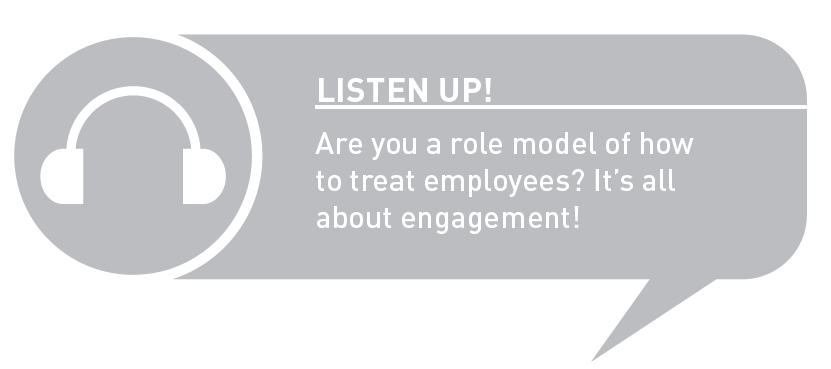
Employee Behaviors
The following is a list of some employee behaviors that you may observe during the Mission Accomplished stage.
- Shows subtle and not so subtle signs of disengagement with the organization and manager, such as nonverbal signs of disinterest in the chosen field.
- Pays special attention in conversations about development opportunities in other organizations and about who has left the organization to do something else.
- Reactivates latent networks to find opportunities to pursue other interests.
- Shifts conversations to remembering past successes and accomplishments whenever possible.
- Dedicates the requested amount of effort to tasks.
- Previous level of performance changes to better or worse.
Now it’s your turn.
Select which behaviors from this list you have observed among the employees who are in the Mission Accomplished stage in Worksheet 8.5.
Worksheet 8.5 Behaviors Observed From Employees in Mission Accomplished Stage
|
BEHAVIORS |
EMPLOYEE NAMES |
||
|
Shows subtle and not so subtle signs of disengagement with the organization and manager, such as nonverbal signs of disinterest in the chosen field. |
|||
|
Pays special attention in conversations about development opportunities in other organizations and about who has left the organization to do something else. |
|||
|
Reactivates latent networks to find opportunities to pursue other interests. |
|||
|
Shifts conversations to remembering past successes and accomplishments whenever possible. |
|||
|
Dedicates the requested amount of effort to tasks. |
|||
|
Previous level of performance changes to better or worse. |
|||
Manager Dos and Don’ts
Here are some examples of what you should and should not do when an employee is in the Mission Accomplished stage.
Dos
- Respect the employee.
- Manage your emotions, whether they are good or bad.
- Value the employee’s contributions privately and publicly.
- Reward and recognize as appropriate.
- Focus on positives as much as possible.
- Maintain the relationship with the employee as positive as possible.
- Communicate, communicate, and communicate as usual.
- Value and show deference for contributions.
- Give time and be there.
- Tackle issues “straight and to the point.”
Don’ts
- Convey mixed messages.
- Deny opportunities and projects for development based on an assumption that the employee is approaching the end of his tenure in the organization.
- Discriminate against an employee in performance management the issues based on the assumption that the employee is getting ready to leave or is not paying attention.
- Focus on the negative aspects of the workplace as well as of his performance.
- Fail to listen.
- Minimize value of contributions.
- Withhold incentive pay and rewards.
- Lack empathy.
- Dedicate less time to the employee because he seems like he is about to leave.
- Try to interfere with the employee’s decisions in this stage.
- Provide less information because he may be going elsewhere and may take that information.
- Postpone or cancel recognitions, rewards, or bonuses.
Now it’s your turn.
Worksheet 8.6 presents a behavior self-assessment for you to identify those behaviors that you have displayed or that you display typically. Place a check mark on the right column to indicate if you display those behaviors, you do not display them, or you display them sometimes.
Worksheet 8.6 Manager Behavior Self-Assessment: Mission Accomplished Stage
|
BEHAVIOR |
YES |
NO |
SOMETIMES |
|
DOS: |
|||
|
Respect the employee. |
|||
|
Manage your emotions, whether they are good or bad. |
|||
|
Value the employee’s contributions privately and publicly. |
|||
|
Reward and recognize as appropriate. |
|||
|
Focus on positives as much as possible. |
|||
|
Maintain the relationship with the employee as positive as possible. |
|||
|
Communicate, communicate, and communicate as usual. |
|||
|
Value and show deference for contributions. |
|||
|
Give time and be there. |
|||
|
Tackle issues “straight and to the point.” |
|||
|
DON’TS: |
|||
|
Convey mixed messages. |
|||
|
Deny opportunities and projects for development based on an assumption that the employee is approaching the end of his tenure in the organization. |
|||
|
Discriminate against the employee in performance management issues based on an assumption that the employee is getting ready to leave or is not paying attention. |
|||
|
Focus on the negative aspects of the workplace as well as of his performance. |
|||
|
Fail to listen. |
|||
|
Minimize value of contributions. |
|||
|
Withhold incentive pay and rewards. |
|||
|
Lack empathy. |
|||
|
Dedicate less time to the employee because he seems like he is about to leave. |
|||
|
Try to interfere with the employee’s decisions in this stage. |
|||
|
Provide less information because he may be going elsewhere and may take that information. |
|||
|
Postpone or cancel recognitions, rewards, or bonuses. |
-
How many are dos and how many are don’ts?
-
Identify the three don’ts that you would like to turn into dos.
-
Identify the behaviors that you do sometimes and explain why you do so.
Moving On
Overview
This is the final stage of engagement through the employee’s career. At this time, she has decided to leave the current career and embark in a new one, returning to the Just Beginning stage elsewhere; or she’s decided to leave the workforce altogether. This employee believes that she has reached the maximum level of productivity that she could attain, so she is ready to leave. She also could be engaged or disengaged from the company or from you.
As the employee gets ready to end her relationship with the company, she will focus her energy on preparing for that important transition in as many aspects of her life as possible. Some companies may provide support services for these employees such as emotional or financial counseling, while others may not do so. Similarly, some employees may choose not to use employer-sponsored services even if they are available. You as a manager could provide valuable assistance to your employee by directing her to those services when the opportunity arises and assuming that the employee explicitly expresses her intentions to leave the company with sufficient lead time for you to do something besides planning the typical farewell event.
This stage marks an important juncture for your team because they will need to adjust to the absence of the departing team member. Therefore, you will need to pay special attention to any possible signs of changes in employee engagement in the members of the team (stayers) as a result of this departure to make sure that you continue fostering their engagement with the company and with you.
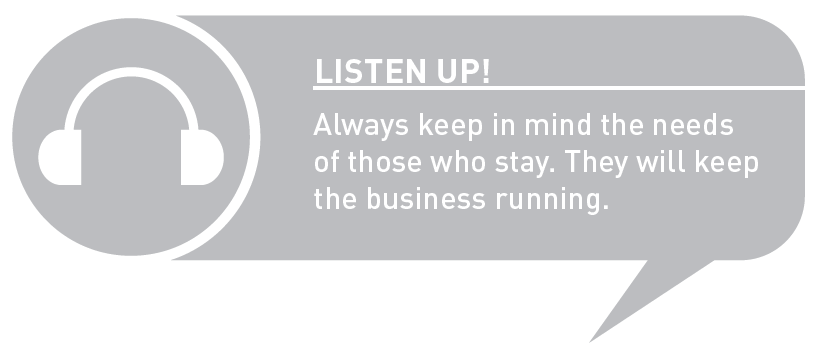
Before we continue our discussion of the Moving On stage, we would like you to identify in which stage of their careers your employees are.
Now it’s your turn.
Who is in the Moving On stage? List the names of those employees who are in this stage in Worksheet 8.7.
Worksheet 8.7 Employees in the Moving On Stage
|
MOVING ON |
EMPLOYEE NAMES |
|
|
|
|
|
|
|
|
Drivers
The employee who reaches this stage may be already disengaged and focused on leaving the company, but we have some suggestions for you as a manager to consider. Please remember that you will be working simultaneously with the employee who is in the Moving On stage and with other employees who may be in other stages of engagement and who will be staying (stayers); you will need to be ready to address everyone’s needs. Specifically, we urge you to maintain communication with all employees, pay special attention to all details about performance management, and be aware of what’s going on, because others will be particularly sensitive to everything that you do or the company does. By focusing on these two crucial drivers of employee engagement during this transition—namely communication and performance management—you will be better positioned to continue to foster engagement after the team reorganizes itself. At the same time, we encourage you to be realistic about what you can do within the timeframe that you have available. The employee who is leaving may have given you sufficient formal advanced notice to act accordingly; too much time, which delays closing the relationship; or too little time to do what is customary in your organization. You must therefore respond quickly and accordingly.
Employee Behaviors
The following is a list of some employee behaviors that you may observe during the Moving On stage. These behaviors will vary depending on the reason why the employee is Moving On.
- Shows signs of disengagement versus “super engagement” with the company and manager.
- Participates as little as possible or too much in the organization and its events.
- Talks about the past even more often than before and tries to focus on positive experiences.
- Searches for meaning of the past in conversations with others.
- May communicate optimistic or pessimistic expectations about the future.
- Tries to make amends with those employees with whom he has unresolved issues.
- Maintains minimal level of personal belongings at the workplace.
- Distributes personal items among co-workers.
Now it’s your turn.
Select which behaviors from this list you have observed among the employees who are in the Moving On stage in Worksheet 8.8.
Worksheet 8.8 Behaviors Observed From Employees in Moving On Stage
|
BEHAVIORS |
EMPLOYEE NAMES |
||
|
Shows signs of disengagement versus “super engagement” with the company and manager. |
|||
|
Participates as little as possible or too much in the organization and its events. |
|||
|
Talks about the past even more often than before and tries to focus on positive experiences. |
|||
|
Searches for meaning of the past in conversations with others. |
|||
|
May communicate optimistic or pessimistic expectations about the future. |
|||
|
Tries to make amends with those employees with whom he has unresolved issues. |
|||
|
Maintains minimal level of personal belongings at the workplace. |
|||
|
Distributes personal items among co-workers. |
|||
Manager Dos and Don’ts
Here are some examples of what you should and should not do when an employee is in the Moving On stage. Remember that you will need to adjust your behaviors based on the reason that the employee is Moving On.
Dos
- Value contributions.
- Facilitate the transition out of the organization or position.
- Ensure that knowledge gets transferred.
- Show empathy.
- Use your interpersonal skills.
- Be respectful and show respect.
- Communicate and listen.
Don’ts
- Dismiss the employee’s role and place in history.
- Disregard any proposals from the employee about the transition or knowledge transfer.
- Minimize the importance of contributions.
- Miss an opportunity to recognize and reward.
- Gossip around.
- Change everything.
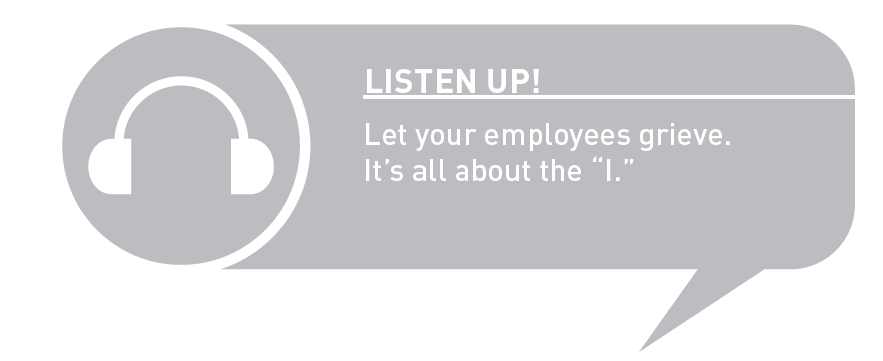
Now it’s your turn.
Worksheet 8.9 presents a behavior self-assessment for you to identify those behaviors that you have displayed or that you display typically. Place a check mark on the right column to indicate if you display those behaviors, you do not display them, or you display them sometimes.
Worksheet 8.9 Manager Behavior Self-Assessment: Moving On Stage
|
BEHAVIOR |
YES |
NO |
SOMETIMES |
|
DOS: |
|||
|
Value contributions. |
|||
|
Facilitate the transition out of the organization or position. |
|||
|
Ensure that knowledge gets transferred. |
|||
|
Show empathy. |
|||
|
Use your interpersonal skills. |
|||
|
Be respectful and show respect. |
|||
|
Communicate and listen. |
|||
|
DON’TS: |
|||
|
Dismiss the employee’s role and place in history. |
|||
|
Disregard any proposals from the employee about the transition or knowledge transfer. |
|||
|
Minimize the importance of contributions. |
|||
|
Miss an opportunity to recognize and reward. |
|||
|
Gossip around. |
|||
|
Change everything. |
-
How many are dos and how many are don’ts?
-
Identify the three don’ts that you would like to turn into dos.
-
Identify the behaviors that you do sometimes and explain why you do so.
KEY POINTS AND TAKEAWAYS FOR PART III
-
My Career “I” Path, yours and theirs, affect each other.
-
Respect the future Career “I” Path of the employees.
-
Avoid false promises or commitments.
-
Benefits, image, and environment are grounds for Getting Settled.
-
Address positive and negative reactions to newcomers in the team.
-
Ensure rewards related to growth and development are available as promised.
-
Steadiness and stability are key in Getting Settled.
-
Employees generally accept reality “as is” in Getting Settled.
-
Career opportunities are important in Looking for More. Watch out for potential misunderstandings.
-
In Riding the Tide, employees seek stability and ward off obsolescence.
-
Maintain focus and show respect.
-
Extremes are common in Mission Accomplished: either extreme of satisfaction or dissatisfaction.
-
Be ready to act quickly and accordingly—you may have too little or too much time to respond upon learning that someone is Moving On.
